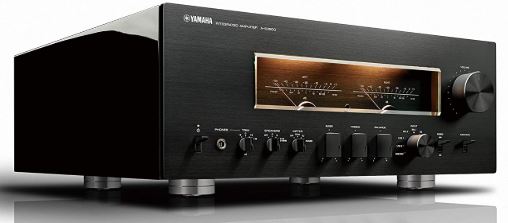Yamaha has released one more superior quality Integrated Amplifier model to the market recently. The flagship model comes with retro design, high-end hardware and innovative technologies to offer an incredible audio experience. The latest Yamaha A-S3200 integrated Amplifier comes in two color variants, viz. Silver (A-S3200SL) and Black (A-S3200BL). Yamaha is targeting high-ticket buyers with this product, who are ready to spend more but do not want to compromise on audio quality. Here is our quick Yamaha A-S3200 Review to explore more about this new beast.
Yamaha pours its decades of experience on designing and building this model. The new integrated amplifier features the Brand’s best available technologies and high quality hardware. The company has paid enough attention to eliminate noise from all sources, and produce a pure and clear sound that the audio creator intended you to hear.
The Yamaha A-S3200BL/A-S3200SL features a high efficiency Toroidal Transformer. Compared to a traditional transformer, Toroidal transformers reduces energy loss by 90-95% to offer purest signal. Toroidal transformers also takes less space and light in weight compared to conventional transformers. The Amplifier is also powered with fully balanced circuit that ensures low signal to noise ratio.
Yamaha also provided thick grounding wires on these models to reduce the impedance. All terminals and fasteners are made of Brass, to ensure loss-less connectivity. The device also uses high-quality TOSHIN capacitors and 2.7mm PC-Tripe C wires for internal speaker.
Coming to design and build quality, the Yamaha A-S3200BL/A-S3200SL appears brilliant with its classic look. With analog dials, classic switches and knobs on brushed metal finish panel gives a striking look to the model. The feet are made of chrome plated brass, the Pinpoint design keeps the unit firm. All heavy parts under the hood also firmly bolted directly on to chassis to avoid vibrations.


